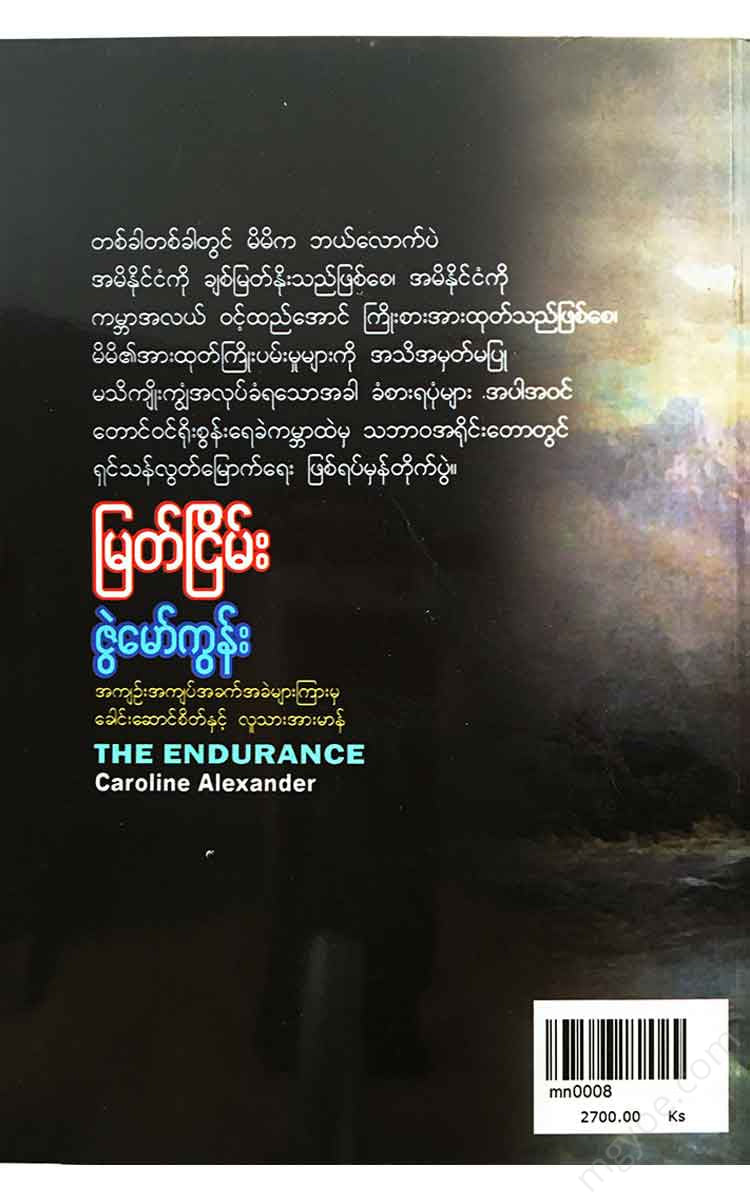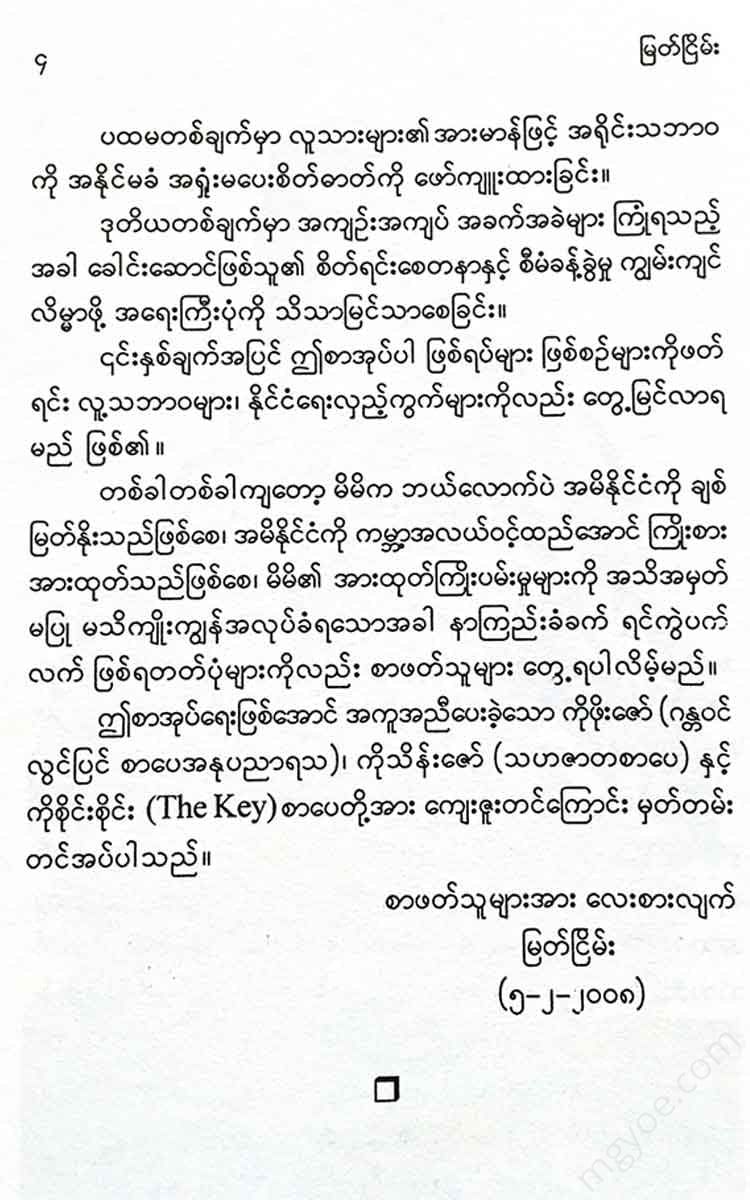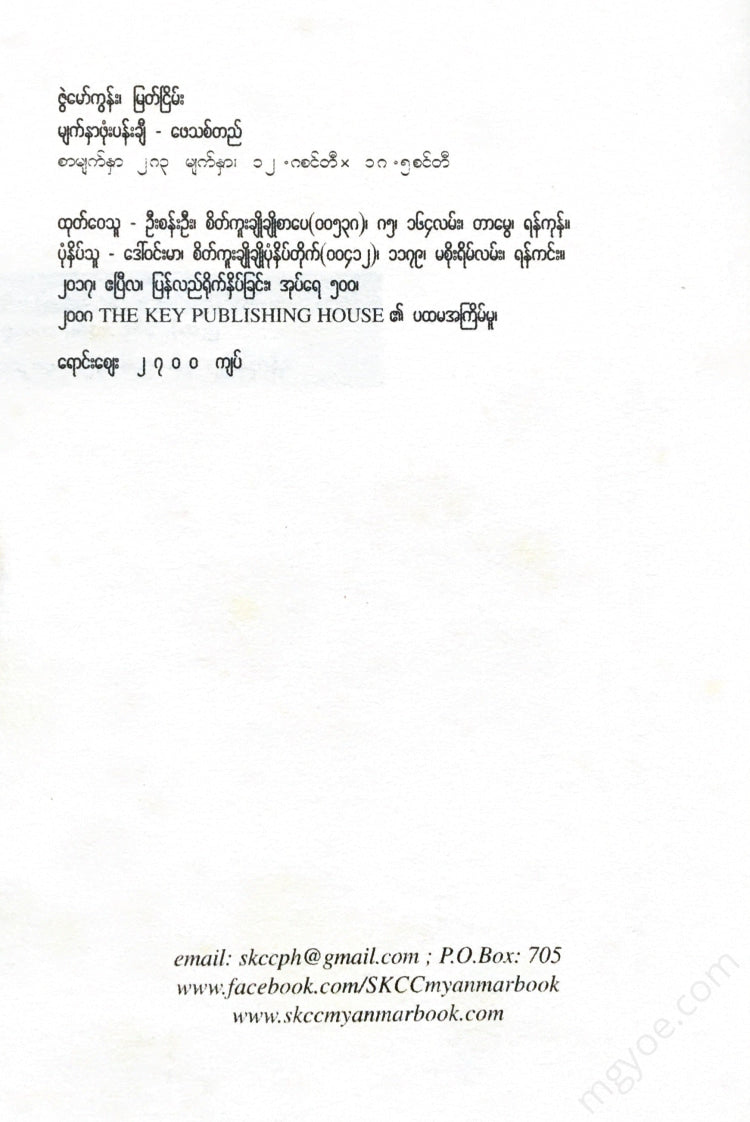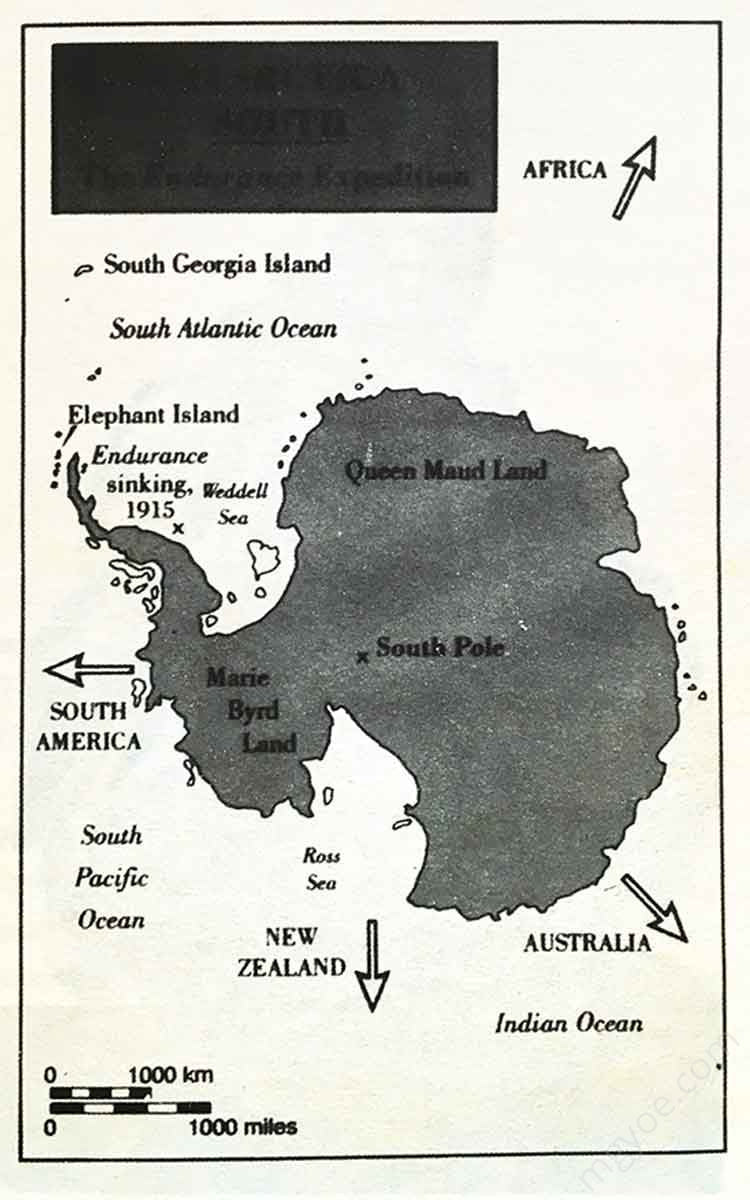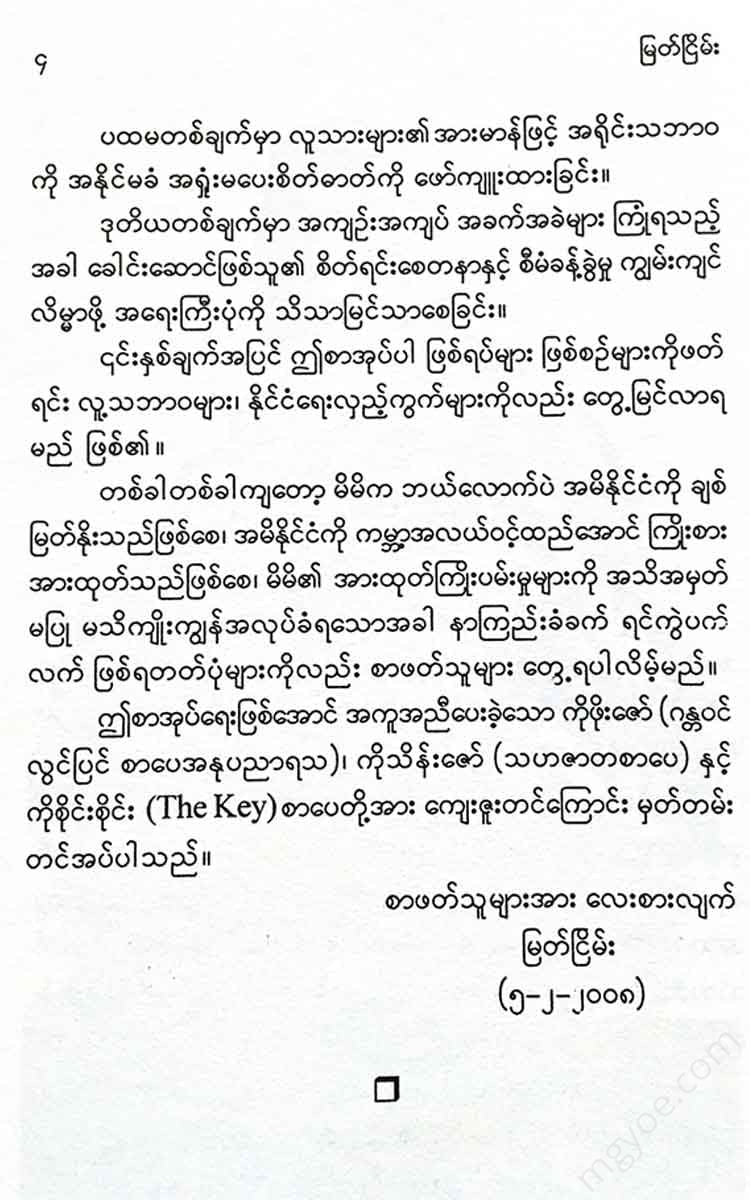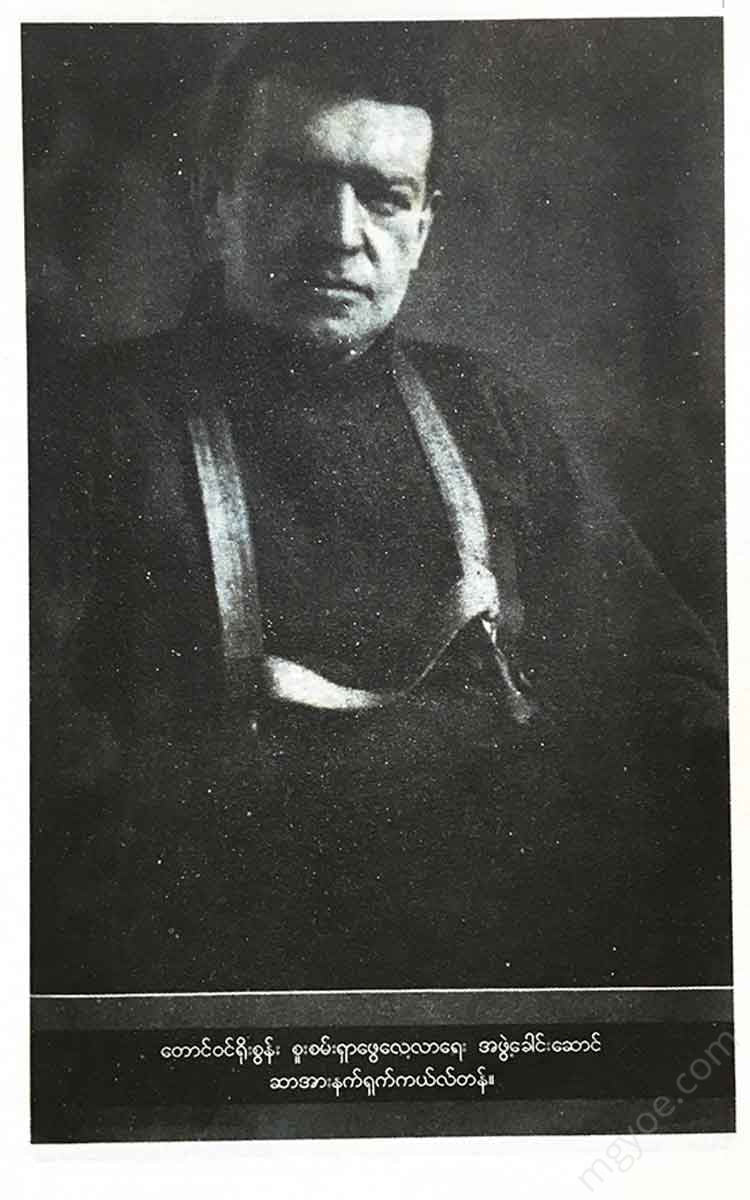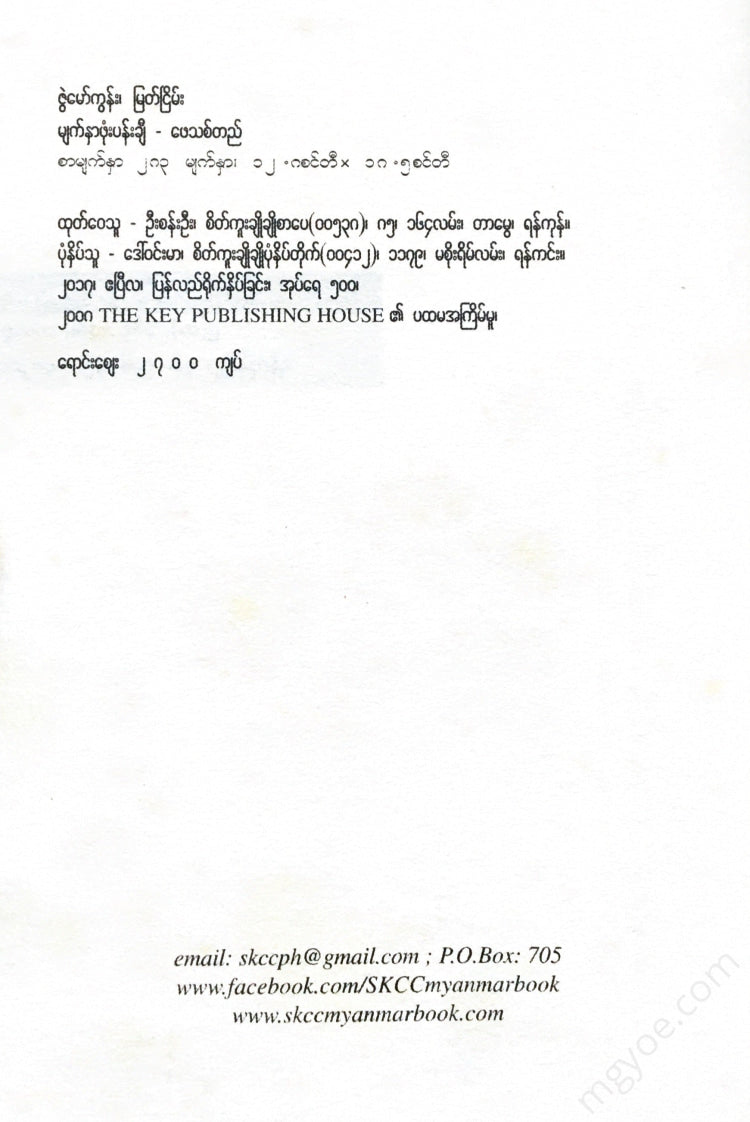စိတ်ကူးချိုချိုစာပေ
Myat Nyein - Zwe Maw Kun
Myat Nyein - Zwe Maw Kun
Couldn't load pickup availability
The era of heroes
Captain Francis Wesley would remember that day vividly for the rest of his life. He was in the Antarctic, the South Pole. It was midwinter, July. The darkness of the long nights had been upon them for weeks. The temperature was thirty-eight degrees Fahrenheit. He looked around the ship to his left, and under the bright stars, he could see a vast, motionless ice floe.
Every now and then the sharp, howling wind would drown out all speech. In the distance, the ice was groaning. Weasley and his companions listened to the ominous sound of the ship as it bore them into the ice. Sometimes the wooden hull, pressed tightly against the weight of millions of tons of ice, creaked. It creaked.
“This boy is about to die,” said one of the three men on board. “This ship is not going to survive in this ice floe, Captain. It will die by day or by night. So you better decide what to do. This boy can last three or four months. It may be three or four weeks, or it may be three or four days... There is one thing, ice has a way of holding on to what comes its way for a long time.”
The year is 1915. Sir Ernest Shackleton, who spoke these words, was one of the most famous polar explorers of his time. The third of the three men speaking was his assistant, Frank Weil. Their little ship, the Zeal, was stuck in the icy waters of the Weddell Sea in Antarctica. Shackleton, who led the expedition, was a man of great ambition. He was determined to succeed. He was determined to seize the last remaining prize that had yet to be won by polar explorers. That was to walk across Antarctica.
The Zwe had set sail from the whaling stations on South Georgia in December 1914. That year, the ice conditions were unprecedented. The ship had already fought its way through the ice and had now traveled more than 1,000 miles, reaching the entrance to the Antarctic Circle. Less than a hundred miles from its original destination, the ice conditions had worsened, and the Zwe had to stop. A strong northeasterly gale had been blowing for six days, and the ice was getting thicker. The Zwe was stuck in the middle of the increasingly dense ice. Within a few days, the temperature had dropped to 9°C. It was as if she had been dragging the ice floes floating on the sea with a mortar. At that moment, the Zew, stuck between the icebergs, was carried northward by the relentless Weddell Sea. It drifted farther and farther from the port where it had intended to dock.
By the time Shackleton set out on his great journey across the Antarctic, he had already become a national hero. He had made two polar expeditions. On one of his journeys he came within 100 miles of the South Pole. This was the furthest anyone had ever made to the South Pole. However, he did not reach the Pole on either of his two expeditions. When Shackleton set out on his first expedition to the South Pole in 1914, the title of South Pole had already been won by others. But he did not care. He decided to cross the Antarctic continent by crossing the Weddell Sea to the Ross Sea. This was his grand ambition.
The journey was a journey that was not to be taken lightly. Shackleton's responsibilities included raising funds and recruiting men. He was forty years old at the time. Shackleton, who had a wealth of experience as an explorer and campaigner, drew on his experiences. He had to use his physical and mental strength to make his journey a success.
But... Shackleton didn't know it yet. His great journey across the Antarctic would be another failed attempt. However, it is possible that this attempt was so memorable because of its failure.
Antarctic explorers began their adventures in the early twentieth century. Their expeditions were unlike those on land. There were no dangerous wild animals in the Antarctic regions. Nor were there any savage tribes of savages.
However, the wind speed in this area is up to 200 miles per hour. The coldest temperature is up to 10 degrees Fahrenheit. In this area, the only competition is between humans and the wild, untamed nature. The competitions and battles are pure. Pure. No tricks or deception. No confusion. Another competition is between people and their determination. How much can they endure in the competition with wild nature? How much is their spirit strong? The uniqueness of the Antarctic region is that it was actually discovered by explorers, so it got its name, the Antarctic region. There are no indigenous peoples in this area. Since no human has ever set foot on this land, no human has ever set foot on this land.
The Zwe expedition, which began in 1914 and ended in 1917 during the First World War, is often referred to as the last expedition of the era of polar exploration, or the era of heroes. Shackleton's Antarctic expedition demonstrated his ambition and ability to overcome the hardships, difficulties, and sufferings he encountered on the Zwe expedition. He was praised for his courage and determination. In overcoming the difficulties and the greatness of his own courage, Shackleton was a man unlike any other.
The era of heroic adventure began in 1901. In August of that year, the ship Discovery set sail for the McMurdo Strait in Antarctica. The leader of the Discovery expedition was Captain Robert Falcon Scott. Although the public claimed that their voyage was for the advancement of science, their real purpose was to be the first to set foot in uncharted territory. In other words, to plant the British flag there and claim it for Britain.
Scott chose two companions to accompany him on his expedition to the Arctic. One was Dr. Edward Wilson, a physician and zoologist who was also a close friend of Scott. The other was Lieutenant Ernest Shackleton, who was a young man.

